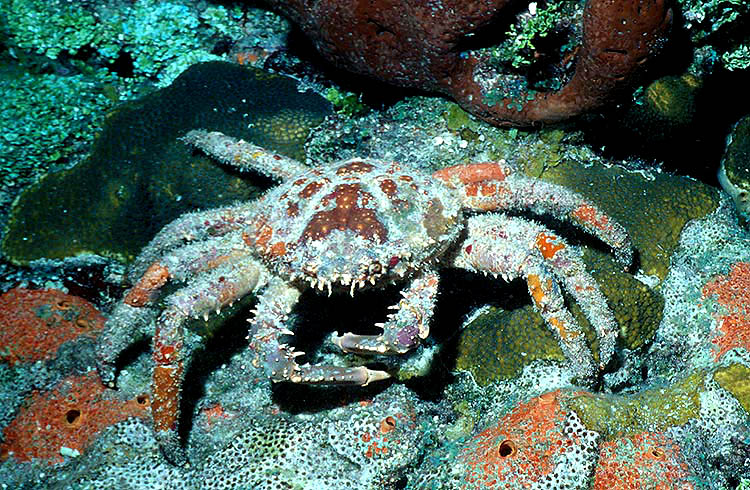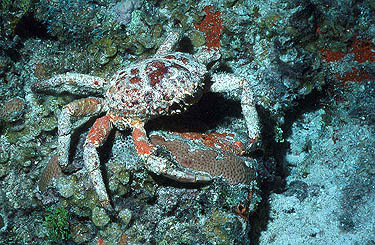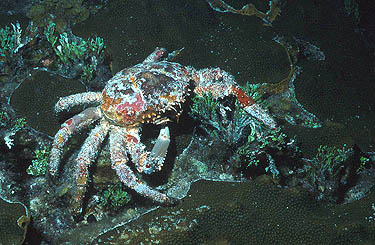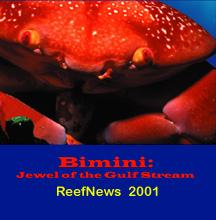


This picture shows one of my favorite animals on one of my all-time favorite coral reefs! This is a King Crab (also called a Stone Crab) at a reef called The Strip near the west coast of Bimini.
The King Crab is well named. It is a huge crab. Its body is 7 inches across and it may be as much as 18 inches from toe to toe. But the King Crab goes by several different names. It is also called a Stone Crab, and it is also called a Channel Clinging Crab. By any name, it is a beautiful animal. Its body is covered by an armored shell that has many spikes and spines for protection. Notice that its color blends in with the reef, giving it camouflage for additional protection. It even has orange and red spots on its shell that match the colors of the Orange Encrusting Sponges near the bottom of this picture.
The King Crab hunts at night. By day, these animals usually hide deep in the many holes in the coral reef. They venture out at night and crawl all over the surface of the coral heads to hunt for leaves of algae growing on the corals. |
 |
The King Crab eats all kinds of algae that grow on the corals. Algae (say, "AL-gee") are plants, or sea weed. These plants compete with the living corals for space on the reef. If there is too much algae, the algae will kill off all the corals. Since all the other animals on the reef depend on corals, this would be the end of the reef. So, the King Crabs play an important role in keeping the coral reef healthy. They work like janitors, to keep the reef clean and the algae in check. Here you can see this King Crab putting a leaf of algae into its mouth. Its mouth is on the underside of its body. The crab will pull up leaves of algae with both claws to put the leaves into its mouth. |
 |
 Learn more about the Coral Reefs of Bimini on the 2001 ReefNews CD-ROM
Learn more about the Coral Reefs of Bimini on the 2001 ReefNews CD-ROM
Bimini: Jewel of the Gulf Stream
Jonathan Dowell took these pictures at night using a Nikonos V with 28mm lens and SB105 strobe. These photos were taken during the ReefNews research expeditions to Bimini, June 1999 and June 2001.